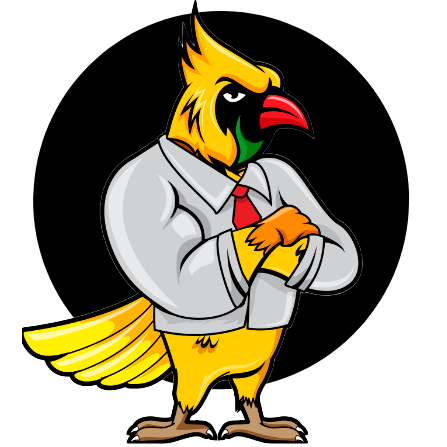No products in the cart.
- Latest
- Trending
ADVERTISEMENT
Non-Fungible Tokens (NFTs) are unique digital assets recorded and protected on the blockchain. Blockchain ensures that assets are safe from tampering and records every sale transfer over time. More importantly, it helps prove ownership of digital assets via an immutable distributed ledger.
As we know, NFTs are rapidly changing and evolving. The rise in popularity of NFTs is mostly related to his use as a PFP (Static Immutable Photo) and mass adoption by celebrities, but NFTs have grown to be much more than that.
Dynamic NFTs are a new class of NFTs that change their appearance depending on certain conditions. Unlike the static NFTs that many are accustomed to. This article explains what dynamic NFTs are, how they work, common examples, and a number of use cases.
To understand what a dNFT is, we need to distinguish it from a static NFT. Static NFTs are now the norm. They are digital art, tweets, land deeds, or event tickets. A key feature of static NFTs is persistence.
As soon as a static NFT is created, it will not be possible to change its appearance or functionality. For example, consider an artist who wants to sell paintings as his NFTs. Once the image is created in the NFT, it cannot be changed. Ensuring this persistence is the detail that governs the smart contract. The smart contracts used in static NFTs make it impossible to change the form, so the assets remain intact forever.
However, static NFT persistence limits potential applications. Designed to stay the same, digital art fits perfectly in your briefs. However, for NFTs like those used in play-to-earn games, that can be a challenge.
This challenge also affects use cases that require frequent data updates, such as tokenizing real-world assets, developing progression-based video games, and establishing fantasy sports leagues on blockchain.
Dynamic NFTs, as the name suggests, are NFTs that can change their functionality or characteristics in response to programmed functionality. Cryptopunks, for example, can change color depending on weather conditions, the time of year, or the occurrence of an event.
Fundamentally, dNFTs change over time and change according to the encoded function.
Dynamic NFTs are created similar to how static NFTs are created. A base NFT is built with metadata that contains information about the NFT. With static NFTs, this metadata is immutable and persistent. However, with dNFT, smart contracts can be coded to trigger NFT metadata changes based on various conditions.
Smart contracts manage updates, unlock hidden traits and functions, and control image enhancements. As a result, smart contract features and capabilities are where dNFTs differ from static NFTs.
Essentially, smart contracts coded into dNFTs bring them to life. Modifications can be made to NFTs by coding them to react to specific events or occurrences. Such events are the passage of time, prices, locations, specific events, etc.
dNFT primarily uses Ethereum’s ERC1155 token, but other blockchain platforms, including Solana, are developing similar token proposals.
dNFTs are just starting to get the spotlight, but they’ve been around for a while. Digital artist Mike He is also called Winkelmann. Beeplewas one of the first artists to create an NFT that could change its functionality.
In 2020, Beeple created Crossroad, an NFT artwork resembling then-US President Donald Trump, ahead of the US presidential election. The artwork was programmed to change its appearance based on the election results.
If Joe Biden beats Donald Trump in the election, Beeple can flip a switch to have the NFT show an animation of Trump’s bloated corpse decomposing in a park. If you win a term, the NFT will show a clip of Trump running through hellscape in Godzilla style. Turned into a corpse NFT.

Not far away, dNFT is making its way onto the sports scene. For 2021, NBA Rookie of the Year her LaMelo Ball received a series of her NFTs collectible from Playground Studio on NFT platform Galaxis.xyz. NFT tracked his real-time performance data and changed as he scored points from plays. Additionally, NFT tracked his assists and steals.
Similarly, the NBA is launching a collection of dynamic NFTs called The Association in 2022. His NFT in the collection represents a player from any of the 16 teams that participated in the playoffs. In this way, his NFT appearance changes based on the player’s performance, dunks, blocks, 3-points, rebounds, or assists, the player’s image changes, and the team’s performance reflects his NFT’s background and ‘frames’. had an impact.
dNFTs are still not very popular, but they are getting more attention year by year. They also open up many possibilities for NFTs, especially in design. This made it easier to deploy NFTs for specific applications. This was not possible with static NFTs. The many possibilities of his NFTs in this class could revolutionize technology. Therefore, here are some examples of dNFT usage.
Dynamic NFTs can improve the overall experience of NFT games and assets. As such, dNFTs can be used to track a character’s progress and development during the game. An example of this is the Axies used in the Axie Infinity game, which develop over time and can even be bred by owners to create more Axies.
Generative art is NFT that is algorithmically generated and only visible after being minted. A unique creation mode allows users to never know what they will get until activated. Therefore, including dynamic components in generative art NFTs can improve the overall experience, as different characteristics can change or evolve based on external conditions.
Real estate NFTs are used to represent off-chain assets such as land. Most real estate NFTs at this time only display information about ownership and properties. But through dynamic NFTs, the image of the NFT can be programmed to change as the properties of the problem evolve. That way, buyers can have a more visual idea of what they’re buying.
You can create dynamic NFTs to display up-to-date information about an individual. This includes travel history, background, recent activity, and more.
Overall, Dynamic NFTs promise a revolutionary new subcategory of ever-evolving non-fungible tokens, making them more useful than ever.
Learn more about NFT>>
want more? Connect with NFT Plaza
Join our weekly newsletter
Join Discord
follow me on twitter
Like us on Facebook
Follow us on Instagram
*All investment/financial opinions expressed by NFT Plaza are based on the personal research and experience of the site moderators and are intended for educational material only. , the product should be thoroughly investigated.

A blockchain maximalist who believes the future we are heading for requires technology. An avid researcher and writer who uses his writings to inform the prospects of his blockchain space.
Copyright © Pbird Media | Copyright © All rights reserved 2024

Copyright © Pbird Media | Copyright © All rights reserved 2024











